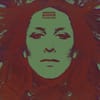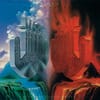Annette Peacock’s “I’m the One” Is an Avant-Funk Affirmation for the Ages
The singer, songwriter, and synth pioneer’s epic 1972 track is an audacious dispatch from an artist restlessly committed to music’s frontiers.

There’s more action and ambition in the first seconds of Annette Peacock’s “I’m the One” than in many entire pop albums. A burst of crescendoing free-jazz orchestration sweeps us up to a realm between MGM grandeur and Sun Ra’s interstellar swing, as if sucking out the song’s gravity so it can float. Each millisecond of this seven-minute psychedelic pop prophecy is an opportunity for Peacock—intrepid jazz composer, Moog pioneer, vocal acrobat, mother—to go beyond. To start, the instrumentation is spacious, inquisitive: a light-touch melange of resonant reeds and buzzing synths and unbound heartbeat drumming. We are journeying under the direction of a woman turning herself inside-out, suspending us in the sky, crashing us back down expanded, at which point, nearly two minutes in, a drum break clears the air. Peacock then steps up to the mic, declaring:
I’m the one
I’m the one
You don’t have to look any further
I’m the one
Instantly, and without question, you believe her.
A teenaged tourmate of free-jazz legend Albert Ayler, acolyte of ecstasy oracle Timothy Leary, and chief architect of the wintry ballads that helped define the sound of vanguard jazz label ECM, Annette Peacock makes the classification of “original” itself feel trite. Regarding her brief experiment with psychedelics at Leary’s infamous Millbrook mansion in the early 1960s, Peacock once joked, “I only ever took one LSD trip and… I don’t think I ever really came back from it! I’ve been fighting my way back into reality ever since.” Lucky for us, that search has gone on pretty long.


